Everest – Chapter 18
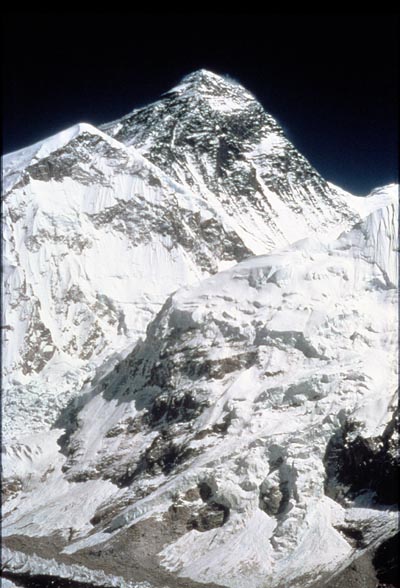 Mt. Everest, at 29,028 feet, is the highest mountain on Earth. In the autumn of 1976, I helped organize the second American expedition to try to climb it. No American woman had yet made the ascent.
Mt. Everest, at 29,028 feet, is the highest mountain on Earth. In the autumn of 1976, I helped organize the second American expedition to try to climb it. No American woman had yet made the ascent.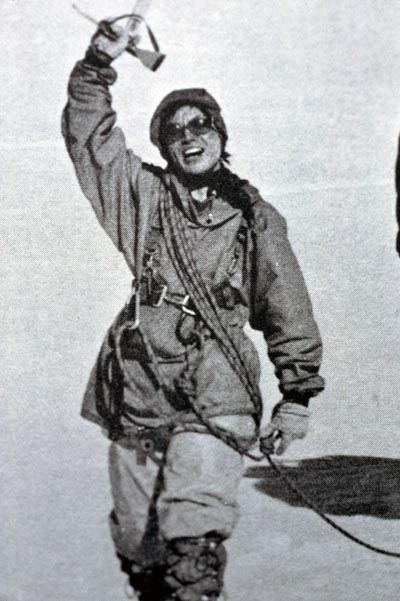 Junko Tabei from Japan, the first woman to climb Mount Everest, reached the summit on May 16, 1975.
Junko Tabei from Japan, the first woman to climb Mount Everest, reached the summit on May 16, 1975.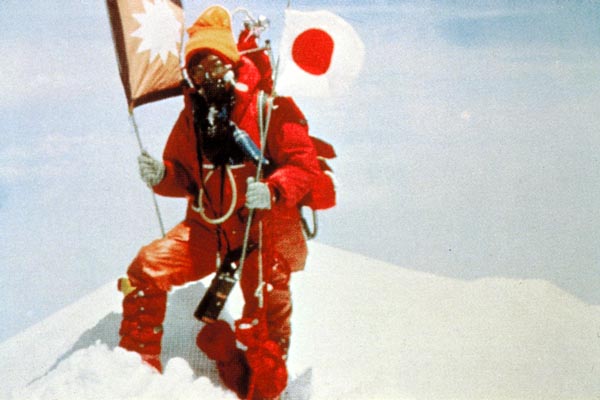 Junko Tabei on the top of Mt Everest on May 16, 1975.
Junko Tabei on the top of Mt Everest on May 16, 1975.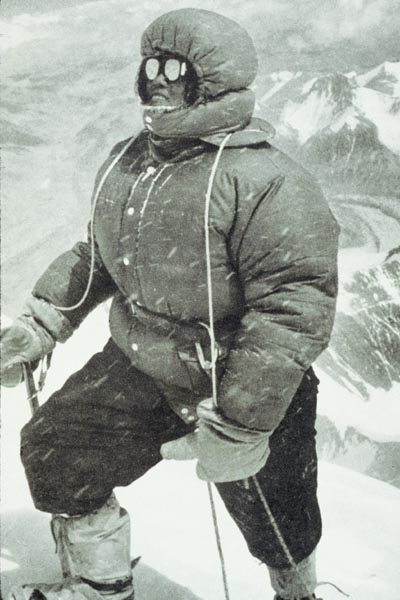 Phantog, a Tibetan woman, made the top just eleven days later.
Phantog, a Tibetan woman, made the top just eleven days later.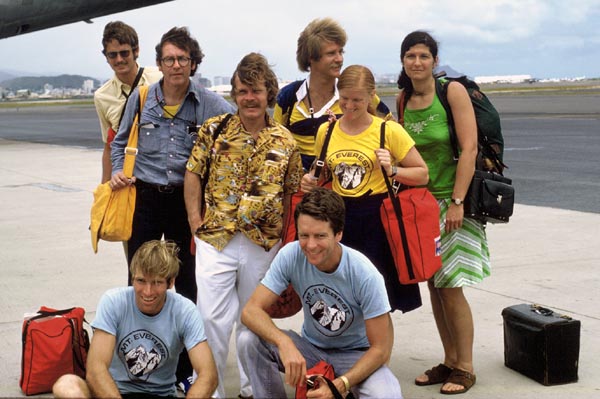 Members of our Everest team, 1976. From left, back: Bob Cormack, Phil Trimble, Rick Ridgeway, Dee Crouch, Barbara Roach, and me. In front: Gerry Roach and Dan Emmett. Frank Morgan, Hans Bruyntjes, and Johan Reinhard aren't pictured.
Members of our Everest team, 1976. From left, back: Bob Cormack, Phil Trimble, Rick Ridgeway, Dee Crouch, Barbara Roach, and me. In front: Gerry Roach and Dan Emmett. Frank Morgan, Hans Bruyntjes, and Johan Reinhard aren't pictured.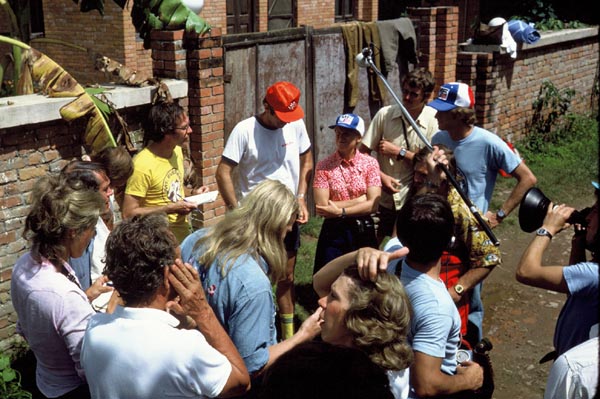 As the film crew aggressively pursued the footage they wanted, some team members began to resent their typecasting us before the climb had even begun.
As the film crew aggressively pursued the footage they wanted, some team members began to resent their typecasting us before the climb had even begun.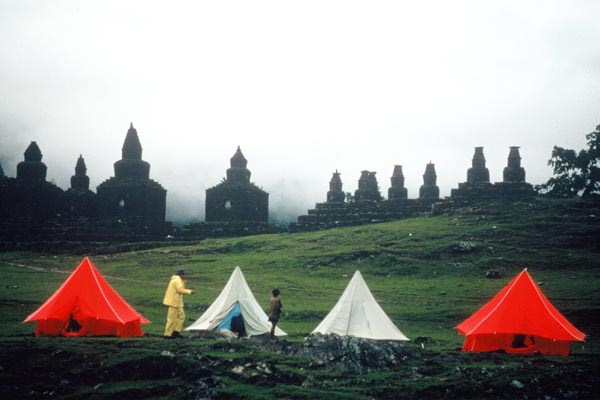 By hiking during the monsoon rains, we hoped to be in position to head for the top during the autumn window of stable weather.
By hiking during the monsoon rains, we hoped to be in position to head for the top during the autumn window of stable weather.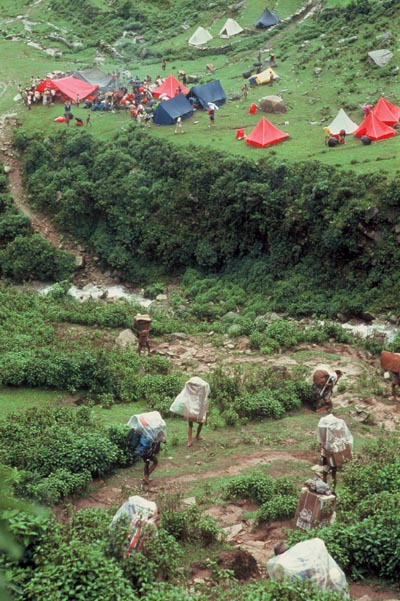 As we made our way across lush, green, terraced fields, the monsoon clouds boiling around us, I felt fit and exuberant.
As we made our way across lush, green, terraced fields, the monsoon clouds boiling around us, I felt fit and exuberant.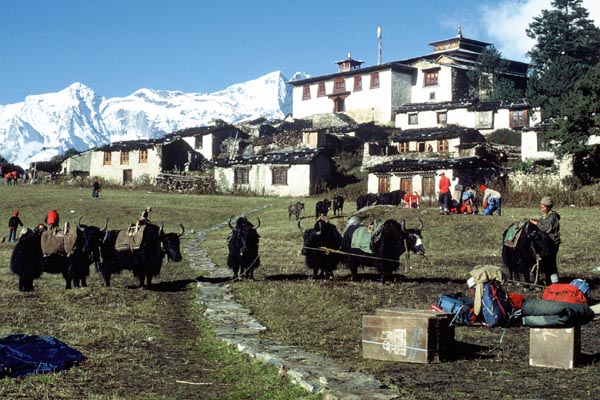 When we reached the monastery at Tangboche, the clouds cleared and we could see the magnificent peaks around us.
When we reached the monastery at Tangboche, the clouds cleared and we could see the magnificent peaks around us.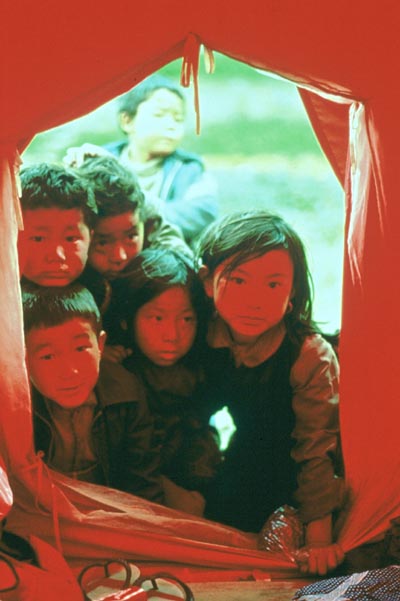 The local children were politely curious about us.
The local children were politely curious about us.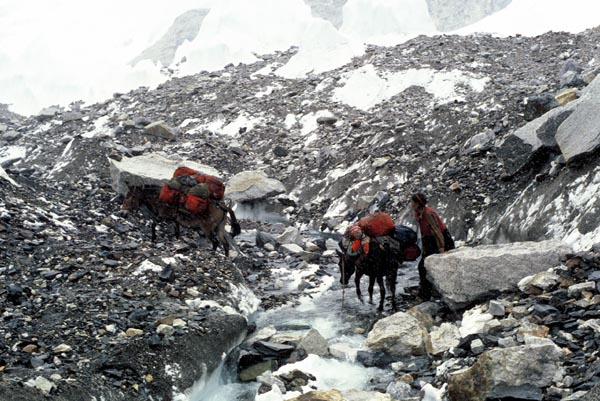 We trekked to the legendary Everest Base Camp, a relatively level spot at 17,600 feet on the moraine of the Khumbu Glacier.
We trekked to the legendary Everest Base Camp, a relatively level spot at 17,600 feet on the moraine of the Khumbu Glacier.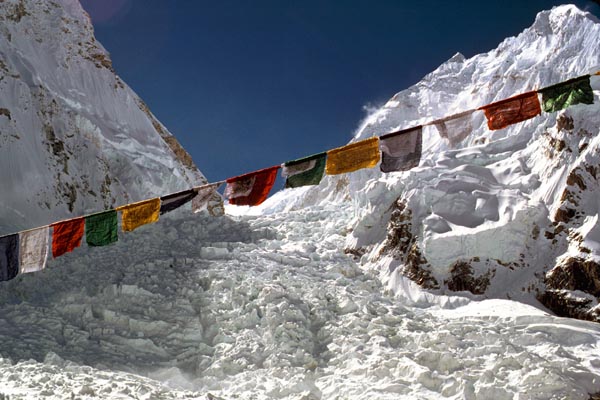 First we had to blaze a safe path through the formidable icefall of the Khumbu Glacier, historically the most deadly place on the mountain.
First we had to blaze a safe path through the formidable icefall of the Khumbu Glacier, historically the most deadly place on the mountain.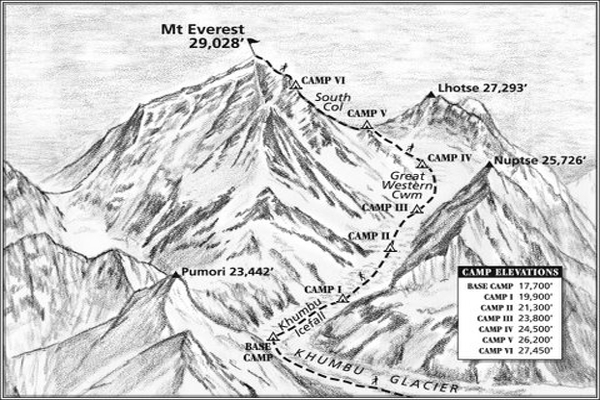 We would place six camps above basecamp before attempting the summit. © Dee Molanaar 2005
We would place six camps above basecamp before attempting the summit. © Dee Molanaar 2005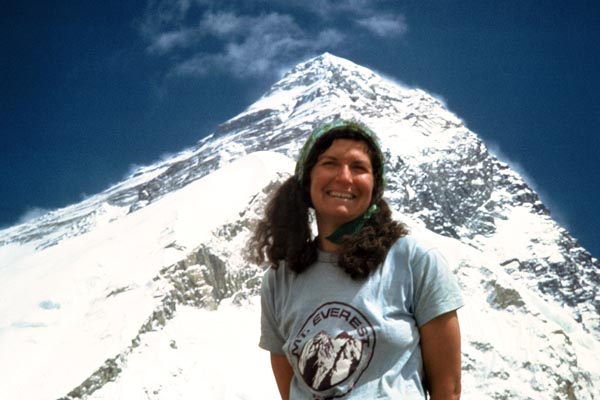 On a rest day, I hiked up 18,000 foot high Kala Patar for a classic view of Mt. Everest.
On a rest day, I hiked up 18,000 foot high Kala Patar for a classic view of Mt. Everest.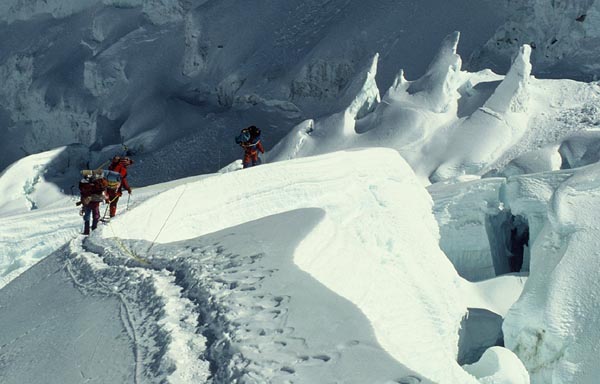 As the sun rose, I looked around, and breathed in the beauty surrounding me.
As the sun rose, I looked around, and breathed in the beauty surrounding me.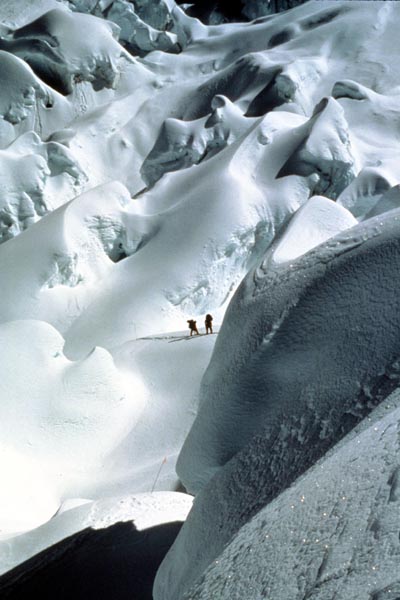 The glacier was a storm-tossed ocean of brilliant crystal.
The glacier was a storm-tossed ocean of brilliant crystal.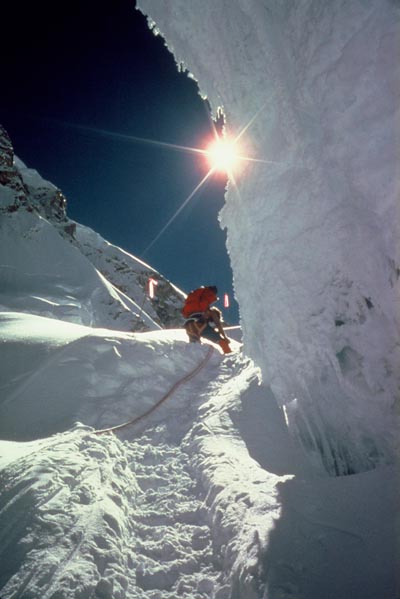 Our plan was to fix the ladders for our icefall route in the dark and retreat when the sun began to soften the menacing blocks of ice that hung above us.
Our plan was to fix the ladders for our icefall route in the dark and retreat when the sun began to soften the menacing blocks of ice that hung above us.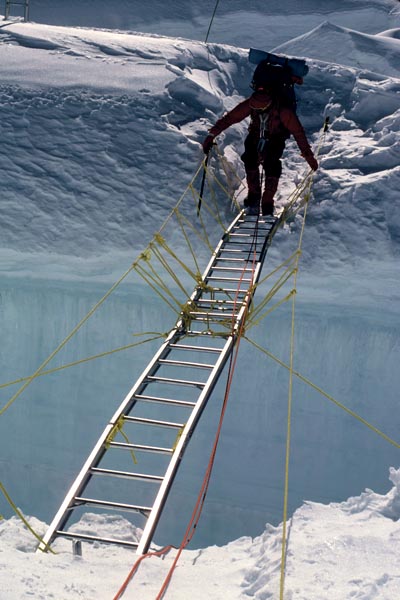 Bob Cormack and I fixed this ladder bridging an enormous crevasse above Camp I. Then I tested it, crossing for the first time with some care.
Bob Cormack and I fixed this ladder bridging an enormous crevasse above Camp I. Then I tested it, crossing for the first time with some care.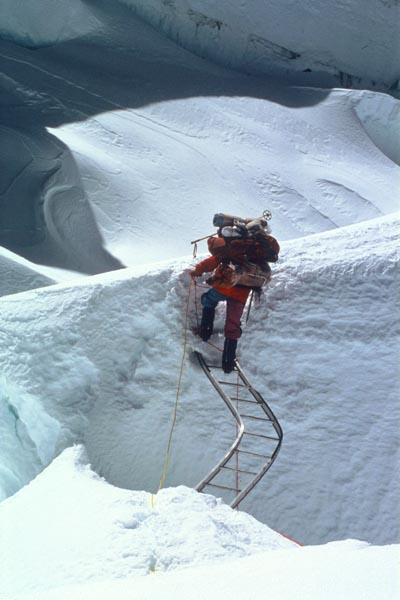 The movement of the glacier bent this ladder.
The movement of the glacier bent this ladder.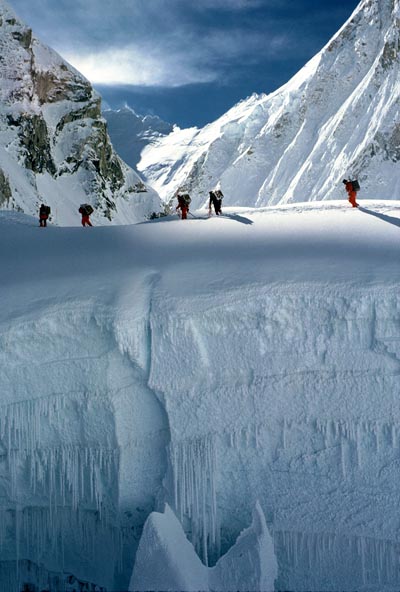 Behind us came the Sherpas, tirelessly ferrying enormous loads of gear and food up the mountain.
Behind us came the Sherpas, tirelessly ferrying enormous loads of gear and food up the mountain.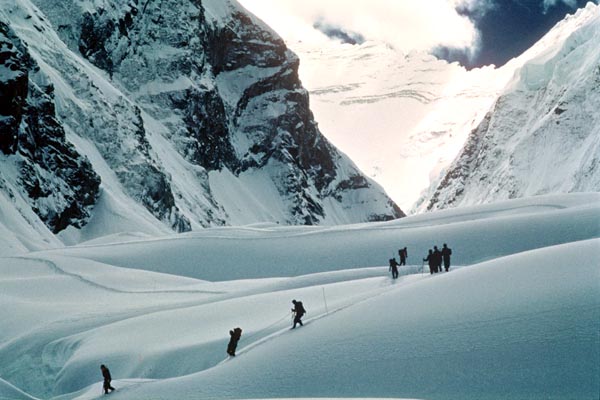 The Western Cwm is the wondrous ice valley leading to Mt Everest's highest slopes.
The Western Cwm is the wondrous ice valley leading to Mt Everest's highest slopes.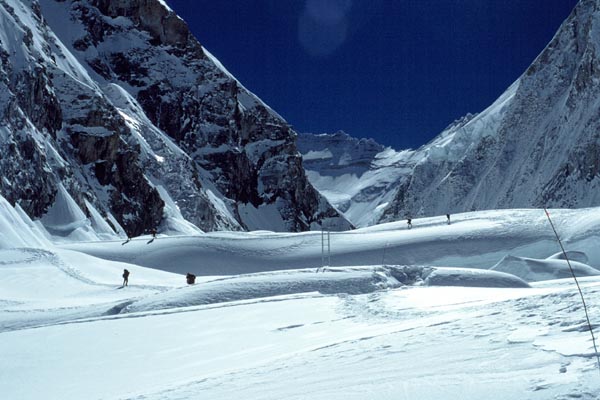 Temperatures changed quickly from 90 degrees Fahrenheit in the heat of the day to minus 40 at night.
Temperatures changed quickly from 90 degrees Fahrenheit in the heat of the day to minus 40 at night.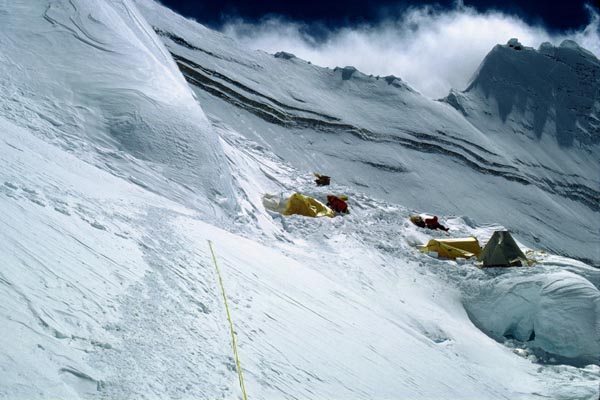 The Camp IV tents were pitched at 24,500 feet on platforms chopped into the ice of the Lhotse face.
The Camp IV tents were pitched at 24,500 feet on platforms chopped into the ice of the Lhotse face.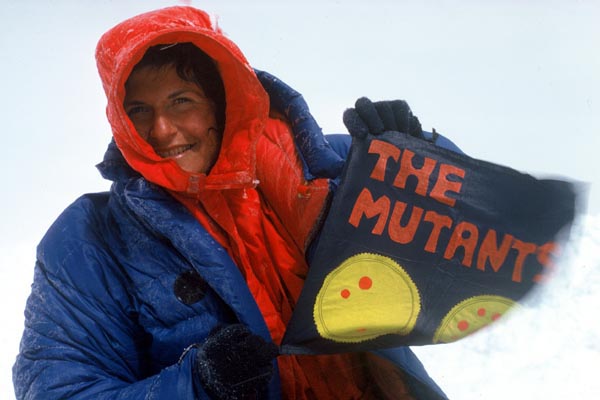 I posed for a photo at 24,500 feet, my personal altitude record. Soon the wind would scour our footprints away, the snow would fall, and there would be no trace of our having been on Mt. Everest.
I posed for a photo at 24,500 feet, my personal altitude record. Soon the wind would scour our footprints away, the snow would fall, and there would be no trace of our having been on Mt. Everest.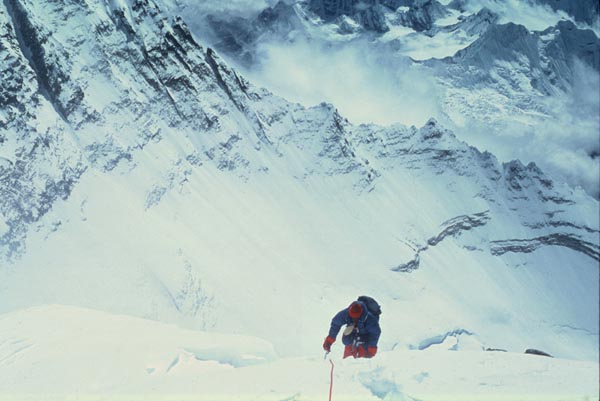 The higher Bob Cormack and Chris Chandler climbed on their summit ascent, the more spectacular and unearthly the views they saw.
The higher Bob Cormack and Chris Chandler climbed on their summit ascent, the more spectacular and unearthly the views they saw.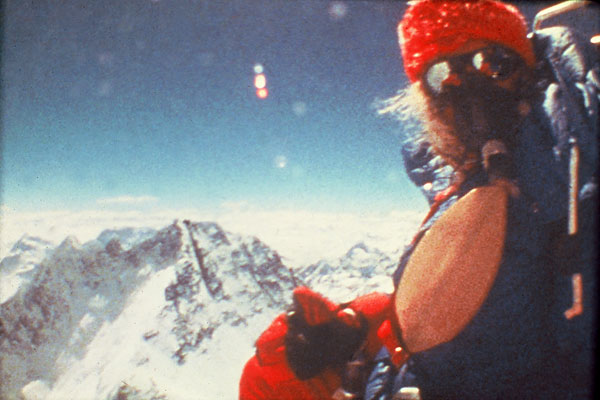 Chris Chandler on top of Mt. Everest on October 1976, the second American ascent
Chris Chandler on top of Mt. Everest on October 1976, the second American ascent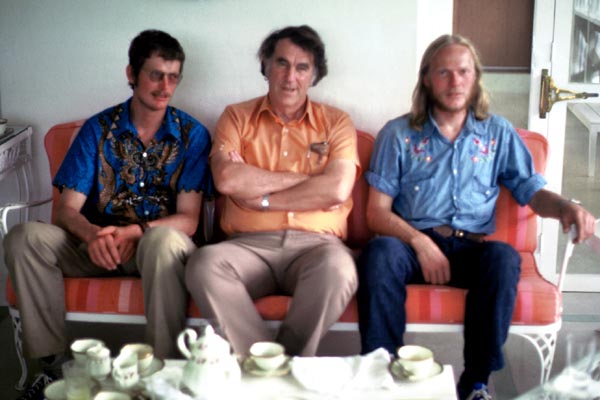 Back in Katmandu, I discussed various possible climbs Bob, Sir Edmund Hillary, and Chris.
Back in Katmandu, I discussed various possible climbs Bob, Sir Edmund Hillary, and Chris.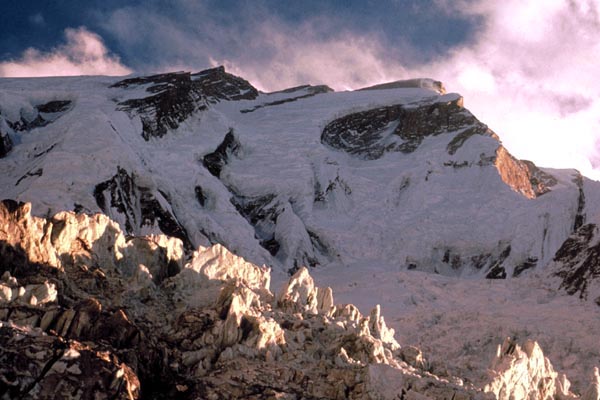 I would return to Nepal in 1978 with a team of women to attempt to make the first American ascent of Annapurna I, 26,545 feet. I hoped it would prove to be a relatively safe and easy 8000 meter peak.
I would return to Nepal in 1978 with a team of women to attempt to make the first American ascent of Annapurna I, 26,545 feet. I hoped it would prove to be a relatively safe and easy 8000 meter peak.